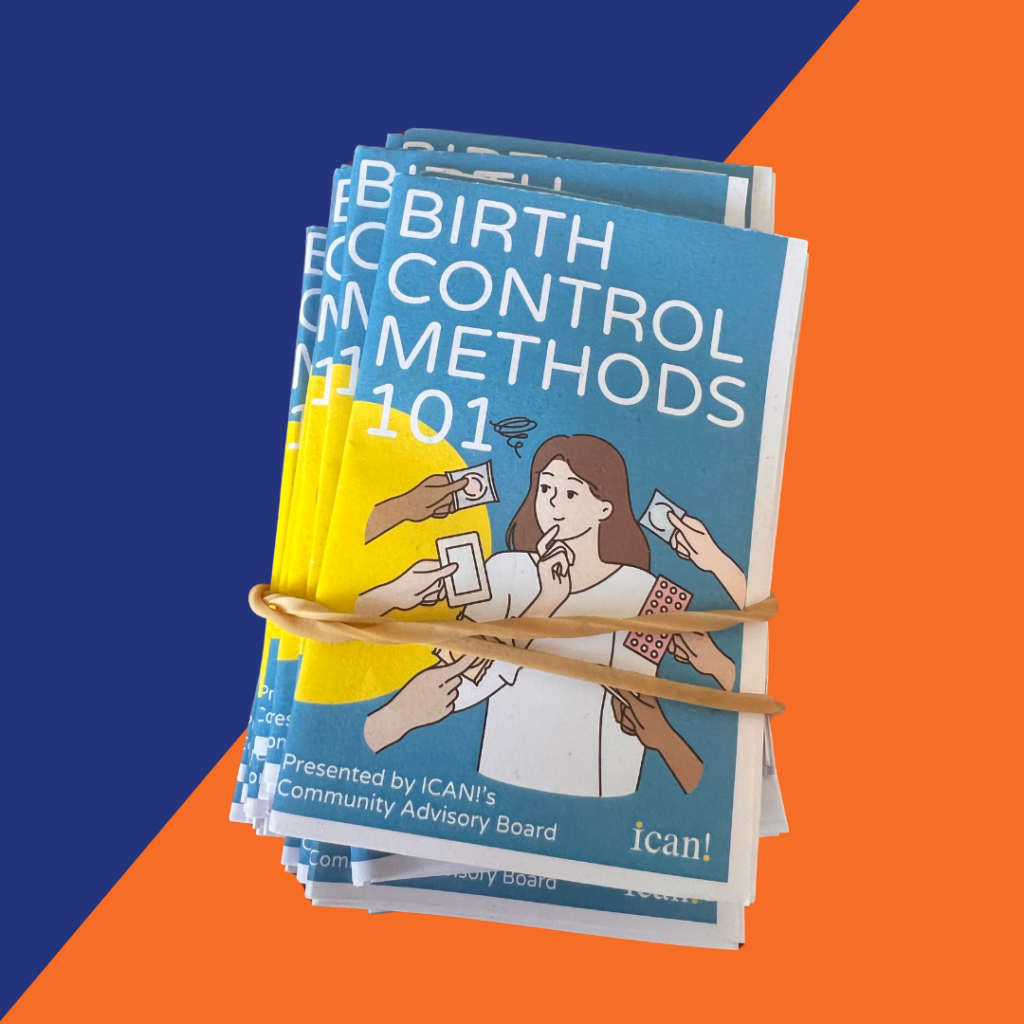Where and how to get FREE or low-cost birth control—even if you don’t have insurance!

If you’re struggling to figure out how to pay for your birth control, you’re not alone! Let’s walk through the answers to some common questions to help you understand your health coverage options so that you can get your preferred birth control method at low or no cost.
First things first… What do these insurance terms even mean?!
We know – it’s confusing! Let’s lay out a few of the basics:
- Health insurance: An agreement with a health insurer to pay some or all of your health care costs in exchange for a payment from you each month (aka premium). Health insurance can be from your job, your partner/parent’s job, the marketplace, or publicly through Medicaid or Medicare (Medicare is what most people 65 and older are on).
- Premium: What you pay each month to have an active insurance plan. There are no premiums with Illinois Medicaid!
- Network: The providers and health centers your insurance plan partners with to deliver care. Your insurance should tell you how to search for providers or health centers that accept your insurance (aka “in-network”). If it’s out of network, you may have to pay more. Good news is that Medicaid covers birth control services at 100% whether your provider is in- or out-of-network – that means there is no cost to you! For family planning, you can go to any provider that accepts your Medicaid plan for zero out of pocket.
- Deductible: What you pay each year before your insurance starts to pay. You do not need to reach your deductible to get coverage for preventive care services like birth control. Illinois Medicaid has no deductibles.
- Co-payment (aka co-pay): What you pay each visit for the service you receive. Illinois Medicaid for family planning has no copayments.
- Federal poverty level (FPL): A measure to help see if you’re eligible for certain public (aka government) insurance plans like Medicaid based on income and household size.
Example: As a single person earning under $1,366 a month (138% FPL), Maria qualifies for and is enrolled in Medicaid health insurance. Maria wants to get an IUD and she will not have to pay for it because birth control is a preventive service, and Medicaid allows her to see any provider of her choice for birth control services.
Do I qualify for Illinois Medicaid?
Illinois ACA Adults Medicaid is available to anyone 19-64 earning less than 138% FPL (~ $1,500/month) with U.S. citizenship or on the pathway to U.S. citizenship. Most people in Illinois Medicaid are enrolled with a Managed Care Organizations (MCO). Annually or under a Special Enrollment Period (SEP), you can decide which MCO: Aetna Better Health, Blue Cross Community Health, CountyCare, Meridian of Centene Molina and Humana. Under any Medicaid plan you can get your visit and all FDA-approved birth control methods for free!
I am, or was recently pregnant. Are there health insurance options for me?
Regardless of citizenship or pregnancy outcome (birth, miscarriage, or abortion), anyone recently pregnant who has a certain yearly household income and an Illinois mailing address is eligible for Moms & Babies benefits during pregnancy and up to 12 months post-pregnancy. That means that during this period you have full Medicaid benefits including and all birth control options are free. Even better, pregnant people are eligible for what’s called Medical Presumptive Eligibility (MPE) – this means you can get care as soon as you know you are pregnant.
What if I don’t qualify for Full Medicaid?
If you yourself (doesn’t matter about what your household makes) make less than ~$3600 per month before taxes and are an Illinois resident, you may qualify for coverage under the HFS Family Planning Program (HFS FPP) which covers annual exams, all FDA-approved birth control methods, STD/STI testing and treatment, HIV prevention, and more. The program is open to all ages and gender identities. At certain health centers, you’ll be able to apply for temporary, immediate HFS Family Planning Program coverage called Family Planning Presumptive Eligibility (FPPE) for up to two months—regardless of your citizenship status. This means you can start care immediately.
IF you are a US citizen or have been here lawfully for 5+ years, you will also be encouraged to apply for ongoing coverage under the HFS FPP. After your application is reviewed, depending on your income, your household size, and citizenship status, you will either get full Medicaid benefits, HFS FPP, and/or be referred to the Health Insurance Marketplace to look for other health insurance options that fit within your budget. All Health Insurance Marketplace plans should cover all birth control methods without out-of-pocket expenses. If for some reason you have private insurance, but you can’t use it due to confidentiality concerns or high out of pocket cost, you can still apply for both the HFS FPP and FPPE.
What if I have private insurance?
Private (aka commercial) insurance is insurance usually provided by your job, your parent(s), or your partner’s job. Some employers may not cover birth control for religious reasons. If you’re not sure if your preferred method of birth control is covered, call your insurance company, or see if you qualify for HFS FPP and FPPE.
Some examples of questions to ask:
- Does my insurance plan cover all birth control methods?
- Will I have to pay anything out of pocket for birth control?
- When do I pay? How will I receive my bill?
- How do I know if a provider is in-network?
- If I use my parents’ or partner’s insurance for birth control, will they be notified?
What if none of the options above apply to me?
ICAN! Health Centers never turn someone away due to their ability to pay. Use the ICAN! provider finder tool to find a free or low-cost birth control provider near you. Finally, when calling to make an appointment, if you don’t have insurance, ask them about the new HFS Family Planning Program.
When it comes to birth control, you always have options!
Still have questions?
- Check out our birth control quiz to find the method that’s right for you; or
- Check out our website for more information and ask any questions to our ICAN! expert using our LiveChat function or schedule a time to speak to them about getting free birth control in Illinois!
References:
https://www.hrsa.gov/opa/eligibility-and-registration/health-centers/fqhc/index.html
https://bphc.hrsa.gov/programrequirements/compliancemanual/chapter-9.html\
https://opa.hhs.gov/grant-programs/title-x-service-grants/about-title-x-service-grants
https://www.kff.org/report-section/medicaid-and-family-planning-medicaid-family-planning-policy/
https://www.benefits.gov/benefit/1628
https://www.guttmacher.org/state-policy/explore/medicaid-family-planning-eligibility-expansions
https://www.healthcare.gov/coverage/birth-control-benefits/
Income qualification table: https://www.medicaidplanningassistance.org/federal-poverty-guidelines/
Income qualification Table from ASPE – Office of the Assistant Secretary for Planning and Evaluation




